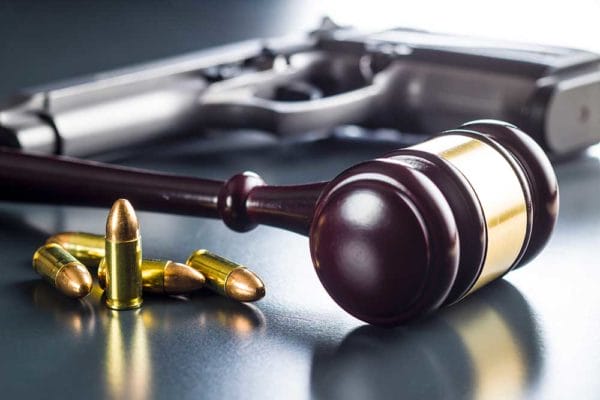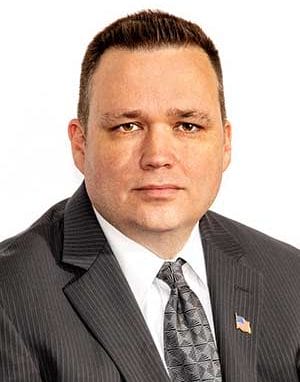
WASHINGTON D.C. –-(Ammoland.com)- The U.S. Department of Justice released its “Comprehensive Strategy for Reducing Violent Crime” to the Department’s employees on Wednesday.
Deputy Attorney General Lisa Monaco sent out the document obtained by AmmoLand News. It centers around the Department’s efforts at reducing violent crime. The memorandum separates offenses committed with firearms, which it calls an epidemic, from other forms of violent crimes. The document does highlight the civil unrest that took place last summer and the nationwide lockdown.
The document calls on the DOJ to make law enforcement more accountable to the community. It points to distrust in law enforcement as a roadblock to reducing violent crime because victims do not trust the police. It calls for more transparency and law enforcement to commit to “procedural justice and community policing.”
The memo also calls for the DOJ to issue grants for programs on the local level to prevent violent crime. The directive doesn’t specify if these programs will be government-run or if local non-profits will receive money. Some worry if these grants are given to non-profits, some of the funds will be used for programs that indoctrinate the people to Democrat causes.
In the late 2000s, ACORN (Association of Community Organizations for Reform Now) received multiple grants from the federal government with the mission to help the poor. But the group was using those funds to get Democrats elected to national offices. The effort extended to the election of President Barack Obama. ACORN also faced multiple allegations of voter fraud. Over 400,000 voters registered by ACORN were rejected. In 2009, ACORN field director Amy Busefink and ACORN official Christopher Edwards pleaded guilty to “conspiracy to commit the crime of compensation for registration of voters.”
The memo calls for the Department to focus its enforcement resources on the most significant drivers of crime. Some of those areas are criminal organizations such as gangs, drug traffickers, and domestic abusers. It also lists gun violence in a separate category. Where the other places on the list concentrate on the people committing the crime, gun violence focuses on the tool used in the crime. This separation leads to the question of if a gang member uses a gun in a crime, does the DOJ consider that gun violence or gang violence? Why not just call it “violence?”
The DOJ will form a “Violent Crime Reduction Steering Committee.” The Deputy Attorney General’s Office will chair the group. It will include elements from the Office of the Associate Attorney General, the Civil Rights Division, the Criminal Division, the Executive Office for United States Attorneys, the Office of Justice Programs, the Department’s law enforcement agencies, etc.
The document goes onto strengthening Project Safe Neighborhoods (PSN). The DOJ launched PSN in 2001 to combat violent crime. The project is a joint effort between “federal, state, local, and tribal law enforcement officials, prosecutors, community leaders, and other stakeholders to identify the most pressing violent crime problems in a community and develop comprehensive solutions to address them.” The group uses data analysis to determine what efforts reduce violent crime and look at lessons learned during its efforts.
The memo encourages every U.S. Attorney’s office to hire a community outreach specialist. This new position will be responsible for interfacing with chief federal law enforcement officers. They will also meet with local and state officers to find ways that the DOJ can better assist those agencies.
The memo states that the DOJ will push for an evidence-based approach to enforcement. It will also focus on intervention programs such as hospital-based violence intervention. The Department will continue to focus on social services, economic opportunities, and reentry programs.
The Department will not aim prosecutions at enforcing “statutes or bringing specific criminal charges.” The memo says U.S. Attorneys should use prosecutions to disrupt violence. It says that these U.S. Attorneys should use a data-driven model and use DOJ grants to work with “criminal justice researchers.” The memo did not have an example of these criminal justice researchers.
The memo calls for the DOJ to look at initiatives run by the ATF, DEA, FBI, and the U.S. Marshals Service. The Department says it will implement changes to those programs to align them with the core principles of the memo. It says these agencies should not concentrate on arresting and charging criminals, which it calls “imperfect proxies of raw numbers.” It calls for a new way of measuring success.”
The programs will be implemented as soon as possible.
About John Crump
John is a NRA instructor and a constitutional activist. John has written about firearms, interviewed people of all walks of life, and on the Constitution. John lives in Northern Virginia with his wife and sons and can be followed on Twitter at @crumpyss, or at www.crumpy.com.

The post U.S. DOJ’s “Comprehensive Strategy for Reducing Violent” Wasting Your Tax Money? appeared first on AmmoLand.com.
from https://ift.tt/3fQWqVN
via IFTTT






No comments:
Post a Comment